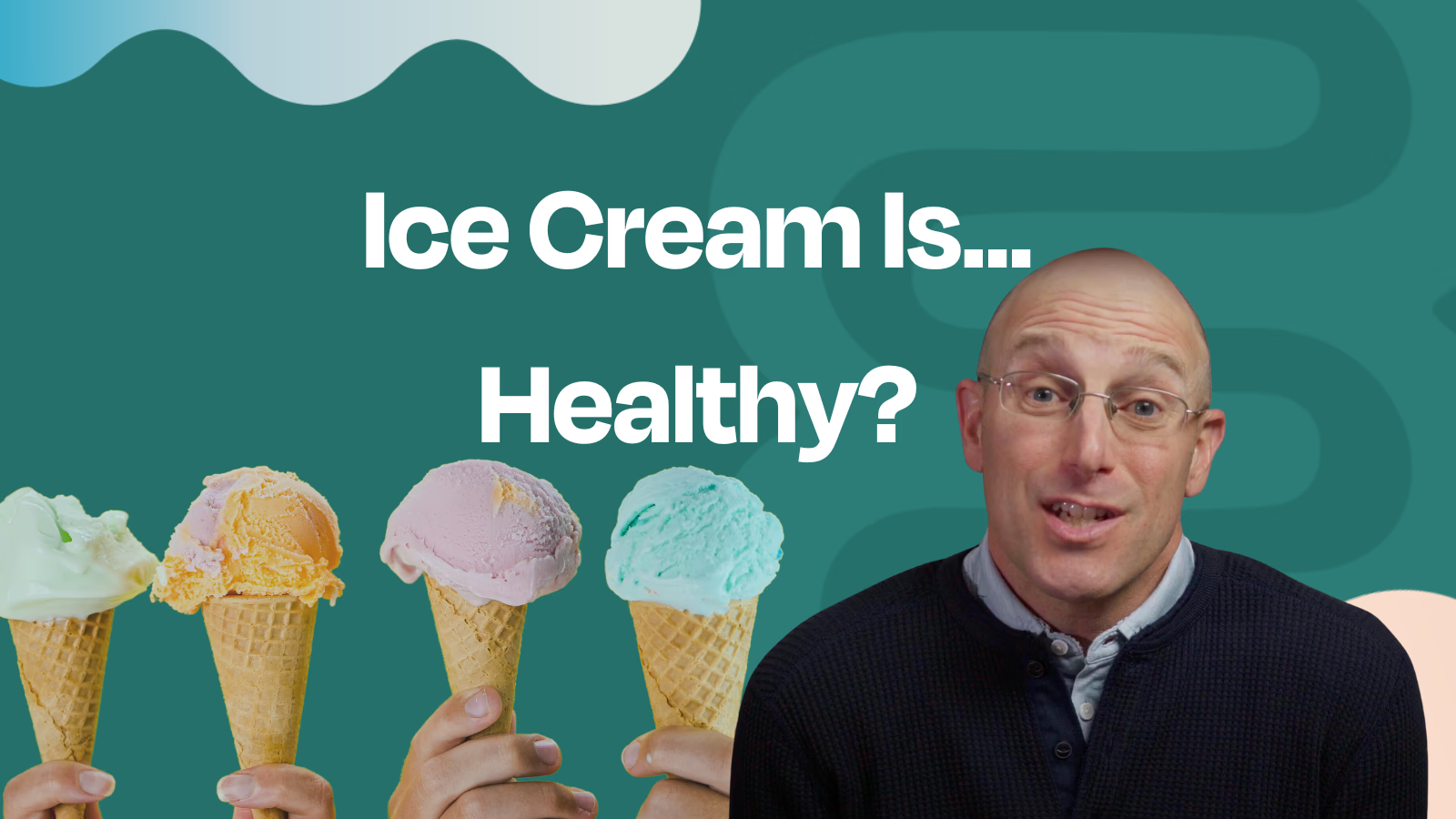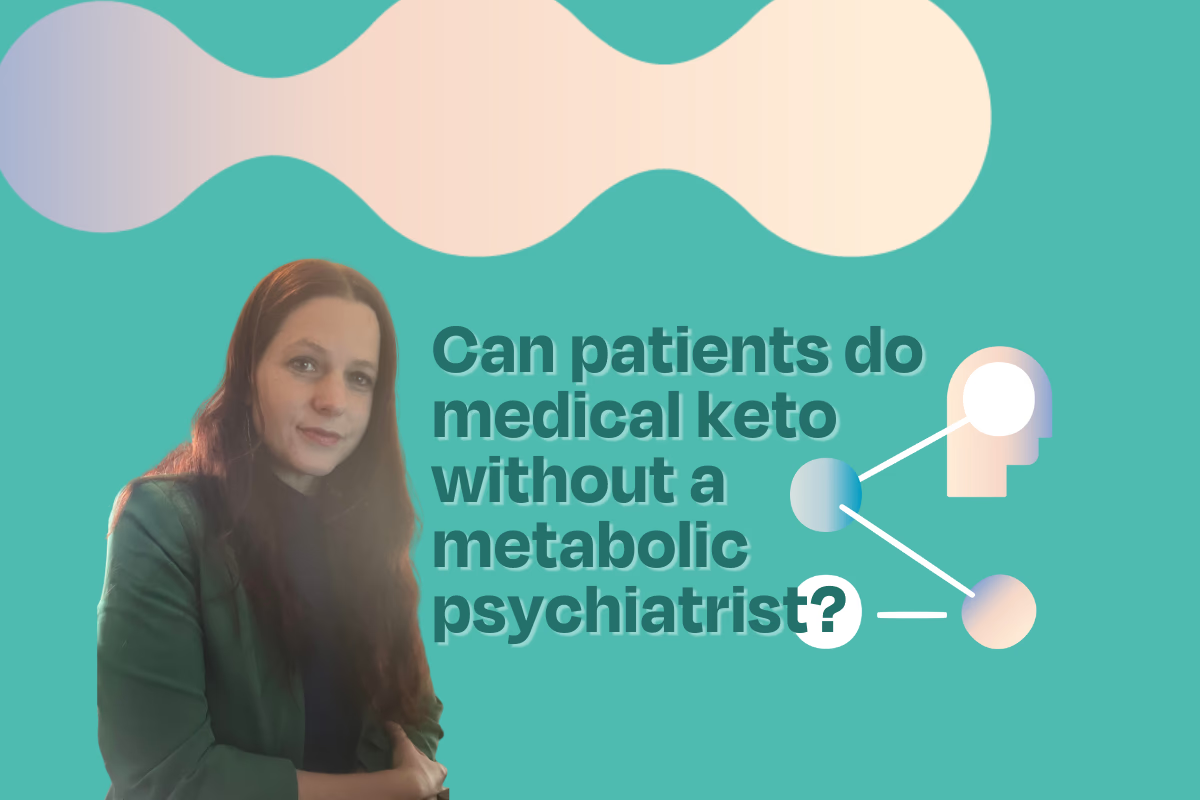Is ice cream healthy? Or has nutritional epidemiology misled us again?

Is Ice Cream Healthy? Or has nutritional epidemiology misled us again?
Have you heard the good news? Scientists have “proven” that ice cream is good for your cardiovascular health, so go ahead and grab that pint of Ben and Jerry’s, knowing that you’re saving yourself from heart disease.
Wait, you don’t believe me?
Good. You shouldn’t.
Because this is one of the many examples of low-quality nutrition epidemiology studies with misleading conclusions. The researchers’ findings in this study show how inherent bias and preconceptions change how we, and others, view research findings.
So why is ice cream getting headlines for being healthy, why are nutrition experts dismissing it, and what does this have to do with low carb, red meat, and saturated fat? Let’s get into all that. But first, please remember Metabolic Mind is a nonprofit initiative of Baszucki Group providing education and resources about metabolic and mental health. Our blog is for informational purposes only. We are not providing individual or group medical or healthcare advice or establishing a provider-patient relationship. Many of the interventions we discuss can have dramatic or potentially dangerous effects if done without proper supervision. Consult your healthcare provider before changing your lifestyle or medications.
The Article That Started It All
The Atlantic first reported the story of “Nutrition Science’s Most Preposterous Result,” based on a paper written (but not published) by Harvard School of Public Health researchers. They looked at the consumption of dairy products and how they influenced the risk of chronic disease. The researchers found that people with type-2 diabetes who ate half a cup of ice cream daily had a LOWER risk of heart disease.
According to The Atlantic article, the researchers didn’t believe the finding and tried to “make it go away.” That means the researchers looked for statistical reasons why their conclusion (that ice cream is good for you) isn’t true, but they couldn’t find any statistical evidence in their data!
And here’s where it gets fascinating: the article quotes other scientists (who weren’t involved in the study) as they attempt to explain why this conclusion can’t be about ice cream actually being good for you! Instead, the scientists came up with alternative explanations, like that people probably ate ice cream to cool down after exercise, so the exercise was good for them, not the ice cream. Or that ice cream is better than a “slab of chocolate cake.” Or that the calcium in ice cream offered a net benefit.
They never considered that the data quality was to blame for the misleading conclusion.
These scientists are all looking at the study’s conclusion through their own healthy user bias, which, combined with the study’s very poor data collection, weak effect size, and confounding variables, make observational studies like this some of the lowest-quality evidence for making individual recommendations about what’s healthy and what isn’t.
Just Eat More Whole Grains!
We find it fascinating that scientists reacted dramatically differently to a paper with similar quality data, published at about the same time, simply because the conclusions fit their inherent bias.
It should be noted that this paper was published by Dr. Darish Mozzafarian and his team at Tufts in an attempt to highlight the healthiest foods for us. This is the same research team that brought us the faulty Food Compass Score (FCS), which suggests that Frosted Mini Wheats and Froot Loops are healthier than eggs and ground beef.
By using nutritional epidemiology and computer modeling (which means scientific guessing), the team at Tufts observed a higher risk of type-2 diabetes for those eating “insufficient whole grains” (yes, we’ve put that in quotes because there is no actual nutritional requirement for whole grains, so it’s impossible to define what insufficient intake is.) The Tufts researchers also observed increased incidences of type-2 diabetes in those who consumed excess refined rice, refined wheat, and processed red meat products.
The finding that increased processed grain and processed meat consumption increase your risk of type-2 diabetes fits a common belief within the nutrition community: that we should all eat more whole grains and less meat. Because this belief is reinforced through multiple well-intended yet poorly-designed research studies, there aren’t many public attempts to explain it away.
But when we dig deeper, we see other disturbing patterns
Does Food Affect Low-Income vs. High-Income Populations Differently?
The Tufts study also reported that food had a more substantial impact on populations in urban areas compared to rural areas, those with less education, and high-income vs. low-income individuals.
Why would this be?
Does where you went to school impact a food’s effect on your physiology?
Does eating the same food in a city vs. rural environment change the composition of that specific food?
Does the food somehow know how much money is in your bank account?
Of course not. These questions sound (and are) ridiculous.
These examples are even easier to explain than the ice cream association. Urban and rural or high and low-educated populations tend to lead very different lifestyles in terms of sleep, physical activity, smoking, drinking, overall diet matrix, chronic stress, and more. Those factors are far more likely to explain the observed difference rather than just the lack of whole grains or the presence of processed meat. But they are harder to measure and harder to “prove.”
How Our Biases Affect What We Believe
At Metabolic Mind, we are fans of a low-carb diet, so we would like to say, “Well, the association with refined rice and grains makes sense, so that one must be true.” But that is our own bias speaking. The evidence for that statement is equally low quality from the study we mentioned and can’t be relied upon to draw any meaningful conclusions.
Weak data are weak data whether you agree with them or not.
It’s important to know that these are nutritional epidemiology studies when researchers collect data from a large population and attempt to create conclusions about what’s healthy by noticing patterns. Unfortunately, the data used in these studies are usually so broad and unwieldy that only rough correlations can be made of any information measured.
And, as we’ve seen in these studies, correlations are NOT always causations. Just because people who eat ice cream had lower incidences of cardiovascular disease does NOT mean that ice cream prevents cardiovascular disease.
Wrapping It Up
Because nutritional epidemiology is so finicky, we can’t interpret conclusions from these studies that we agree with differently than those we don’t agree with. Instead, we need to recognize that nutritional epidemiology findings are very low-quality science and, for the most part, should not be used to make strong health claims.
That said, nutritional epidemiology is not useless. In fact, we can use the results from these epidemiological studies to create hypotheses to test in future randomized controlled trials that could provide stronger, more reliable results.
We hope this article helps you better understand the inherent weaknesses of nutritional epidemiology and highlights how many researchers interpret results through the lens of their own biases. That’s not how we should decide what’s healthy and what isn’t. But with some education and awareness, we can start encouraging better research, which will give us more substantial results and truly healthier practices.
Sources
- Ardisson Korat, Andres V. “Dairy Products and Cardiometabolic Health Outcomes.” (2018).
- Merritt Johns, David. “Nutrition Science’s Most Preposterous Result.” The Atlantic. (2023).






